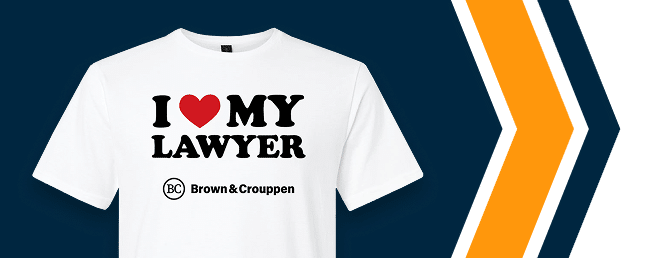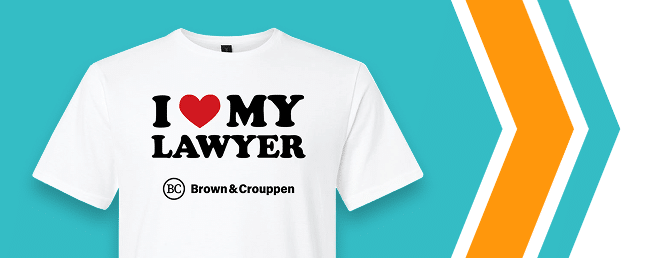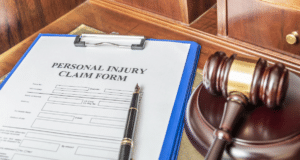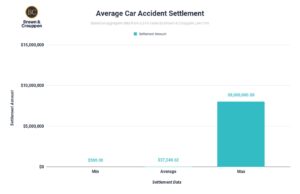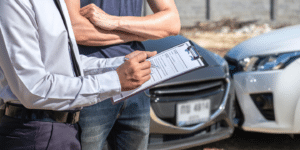Being involved in an accident with a speeding driver can leave you feeling powerless. Proving that the driver’s excessive speed caused your crash can be an essential step toward regaining peace of mind—and protecting your right to compensation.
Even if you shared fault for the accident, demonstrating the other driver’s excessive speed may help you qualify for compensation. Missouri’s comparative negligence laws allow drivers to claim damages if they were anything less than 100% at fault. Knowing how to prove the other driver was speeding can make the difference between walking away with nothing and securing the financial support you need to recover.
Understanding Missouri's Liability Laws: The Highest Degree of Care
Missouri holds drivers to one of the highest safety standards in the nation. Under state law, every driver has a duty “to exercise the highest degree of care at all times,” and anything less can qualify as negligence.
Many common driving behaviors fail to meet the highest degree of care. These include making a risky turn into traffic, changing lanes without checking your blind spot, and speeding—even slightly. If you can show that the other driver was speeding when the accident happened, you have an advantage in proving fault, especially if your actions fulfilled the highest degree of care.
What Must You Prove To Show a Speeding Driver Caused Your Crash?
For a driver’s excessive speed to make them legally liable, it must cover the four elements of negligence. These include:
- Duty of care: The individual had an obligation to act with a reasonable level of caution and attention. A driver’s duty of care requires them to avoid unnecessary risks to other road users.
- Breach of duty: The action violated the person’s responsibility to keep others safe. Speeding may breach the duty of care if it impacts the driver’s ability to avoid collision hazards.
- Causation: The action was a direct cause of the incident. Speeding causes crashes by reducing the available stopping distance and making protective safeguards, such as guardrails and dividers, less effective.
- Damages: You sustained physical, emotional, or financial harm as a result of the crash.
Demonstrating these four elements requires clear, unbiased evidence. Our attorneys can help you determine how to prove that someone was speeding in an accident. If necessary, we can also discuss how you can prove you weren’t speeding.
Key Evidence To Prove a Driver Was Speeding in an Accident
To prove a car was speeding, you need objective evidence, including as much documentation as possible. Adequate evidence may include:
- Police reports: Official documentation created by an unbiased professional
- Eyewitness testimony: Accounts from bystanders without a significant stake in the outcome
- Dashcam footage: Video from a driver’s point of view
- Security camera footage: External video that shows what happened from a different angle
- Skid marks: Tire residue that can show how fast a vehicle was traveling
- Vehicle damage: Dents and breaks that show where, and sometimes how fast, another car hit your vehicle
- Black box data: Information from an electronic device, usually in a commercial vehicle, that records the vehicle’s activity
Even without a speeding ticket, this evidence may prove the driver was traveling too fast for conditions. Our attorneys can help collect and preserve this information to support your claim.
The Impact of Witness Statements
Eyewitness accounts provide a less biased account of what happened during the accident. Each driver wants to reduce their liability, but an eyewitness is less likely to have a stake in the outcome.
Witness statement collection starts at the scene. Look for bystanders who saw the entire incident. You can record an initial statement on your phone, but it’s also a good idea to write down their contact information to obtain an official statement later.
Integrating Accident Reconstruction and Expert Testimony
Accident reconstruction uses physical evidence to model the events of a crash and determine how it happened.
A reconstructionist may provide expert testimony to verify the speed of the at-fault car. An attorney may also call on other experts, such as police officers or automotive engineers, to share their explanations of the accident’s cause. This type of testimony is crucial in complex crashes and situations where fault hinges on speed.
How Vehicle Damage and Skid Marks Show Speed
Skid marks, the residue left from hard braking, can help reconstructionists determine the vehicle’s speed before the crash. The length and type of skid marks indicate the direction and distance the car traveled, which enables the expert to calculate its velocity.
Vehicle damage can also help experts to confirm speed. If the victim’s car has severe damage, it may indicate that the vehicle was traveling at an excessive speed.
How Police Reports and Citations Help Your Case
As official documents, police reports and traffic citations are valuable evidence in an accident case. If the report suggests that the driver was speeding at the time of the accident, it may automatically indicate negligence. This legal concept is called “negligence per se,” meaning “negligence in itself.” In short, a violation of a statute indicates a breach of duty of care.
Our attorneys leverage available reports and citations to build the strongest possible case on your behalf. We look for details in the case that others might miss and investigate the other party’s driving record for potential citations. Shifting the fault to the other party lets us help you pursue maximum damages.
Missouri's Comparative Fault System and What It Means for You
Missouri law allows accident victims to claim compensation even if they were partially at fault. This rule, known as pure comparative negligence, makes it easier to claim damages in Missouri than in some other states.
Using the comparative fault system can help you bring speeders to justice. Speeding led to 152 fatalities in Missouri crashes in 2024, down from 180 in 2023. Even if you were partially responsible for the crash, claiming damages may discourage the driver from speeding again.
If you secure damages in a shared fault claim, you will receive reduced compensation based on your percentage of fault.
What To Do Immediately After a Speeding-Related Crash
Your actions after an accident can strengthen your case. Follow these key steps:
- Call 911: If you don’t need an ambulance, see a doctor as soon as possible after leaving the scene. Seeking treatment and securing medical records shows you take your injuries seriously.
- Document the scene: Photos of the accident, including property damage and visible injuries, serve as objective evidence in your case.
- Gather witness information: Witness testimony can back up your claim. Get contact information so you can reach out later.
- Call our firm: We can help you navigate the insurance process and claim the compensation you deserve.
Our attorneys are committed to making the claims process as easy and stress-free as possible. We’ll meet you wherever you are, including at home or in the hospital, so you can continue to recover.
Common Challenges in Proving Speeding Caused the Collision
Excessive speed is the most common factor in fatal crashes across Missouri, according to the state Coalition for Roadway Safety. There were 359 speed-related fatalities statewide in 2023, making speed twice as common a factor as alcohol impairment.
Unfortunately, it can be challenging to prove speeding in a car accident. Not all accidents leave concrete evidence, such as skid marks on the road. Without proof of excessive speed, insurers may quickly dispute your version of events. They use the lack of evidence as a foundation to dispute fault, leaving the plaintiff on the defensive.
At Brown & Crouppen, our attorneys have the experience and resources to overcome these challenges. We work with trusted experts and investigators to gather accident reconstruction data, obtain eyewitness accounts, and anticipate common insurer tactics. With our legal team on your side, insurance companies are far less likely to rely on intimidation or pushback.
Why Choose Brown & Crouppen for Your Speeding Accident Case
When you need to prove a speeding driver caused your crash, it’s essential to have an experienced attorney on your side. Our firm has represented injured individuals from the Midwestern region for over 40 years. We have recovered over $1 billion in life-changing case results and settlements for our clients, helping thousands of families to heal and move forward.
Our team comprises more than 250 legal professionals who are dedicated to upholding our core values of justice, kindness, and respect. Committed to the well-being of our clients and their families, we are actively involved in the communities where we work.
We leverage our local knowledge and connections to make your case as strong as possible. At the core of this effort are our award-winning attorneys, who have received such honors as the St. Louis Post-Dispatch‘s Headliner award for the Best Attorney in St. Louis, Martindale-Avvo’s AV Preeminent® rating, and The National Trial Lawyer’s Top 100 Civil Plaintiff Lawyers designation.
Reach out today to learn how we can help you protect your rights. Call 800-536-4357, contact us online, or visit us in person for a free consultation. There are no upfront costs, and you only pay if we win.
